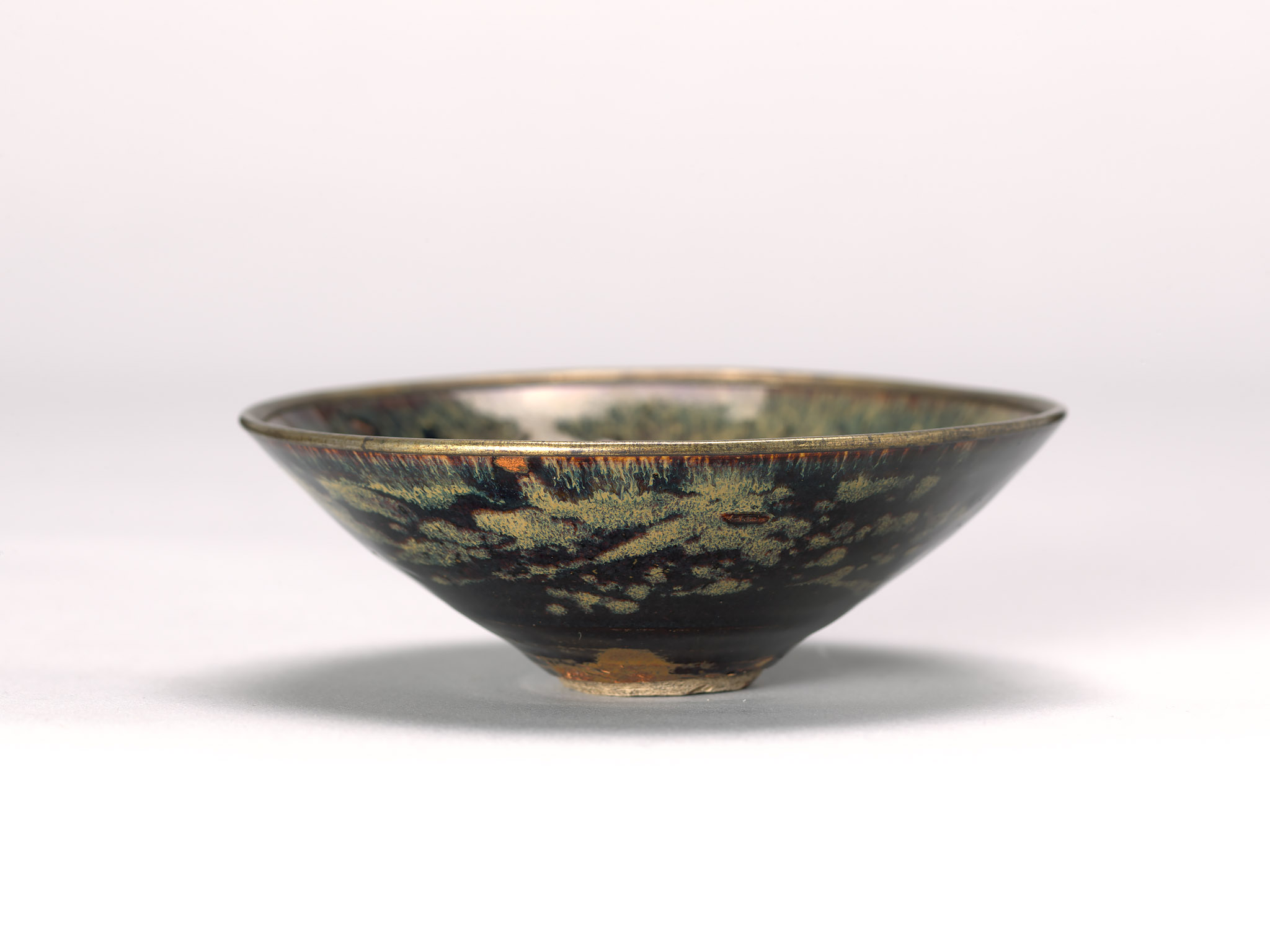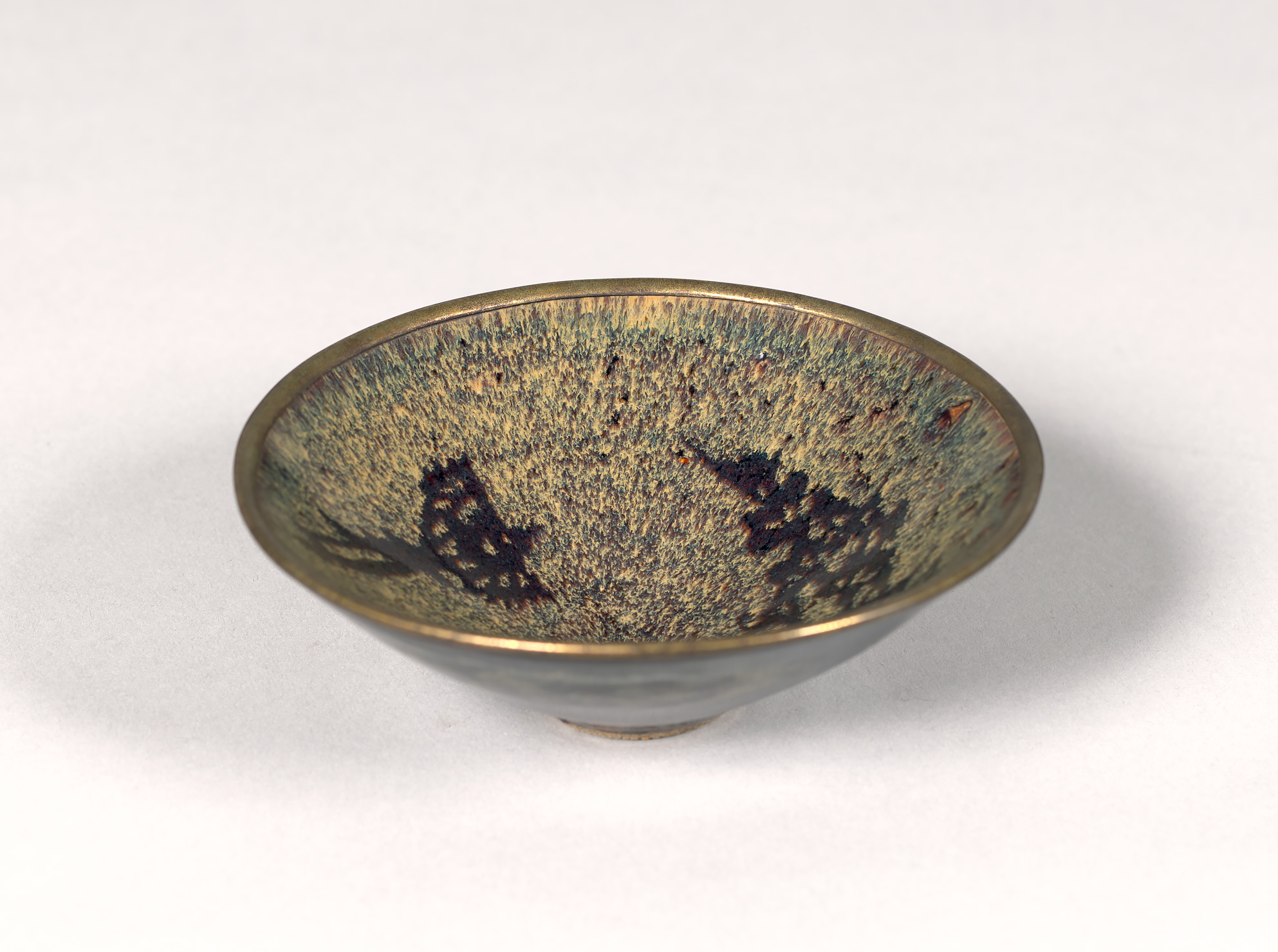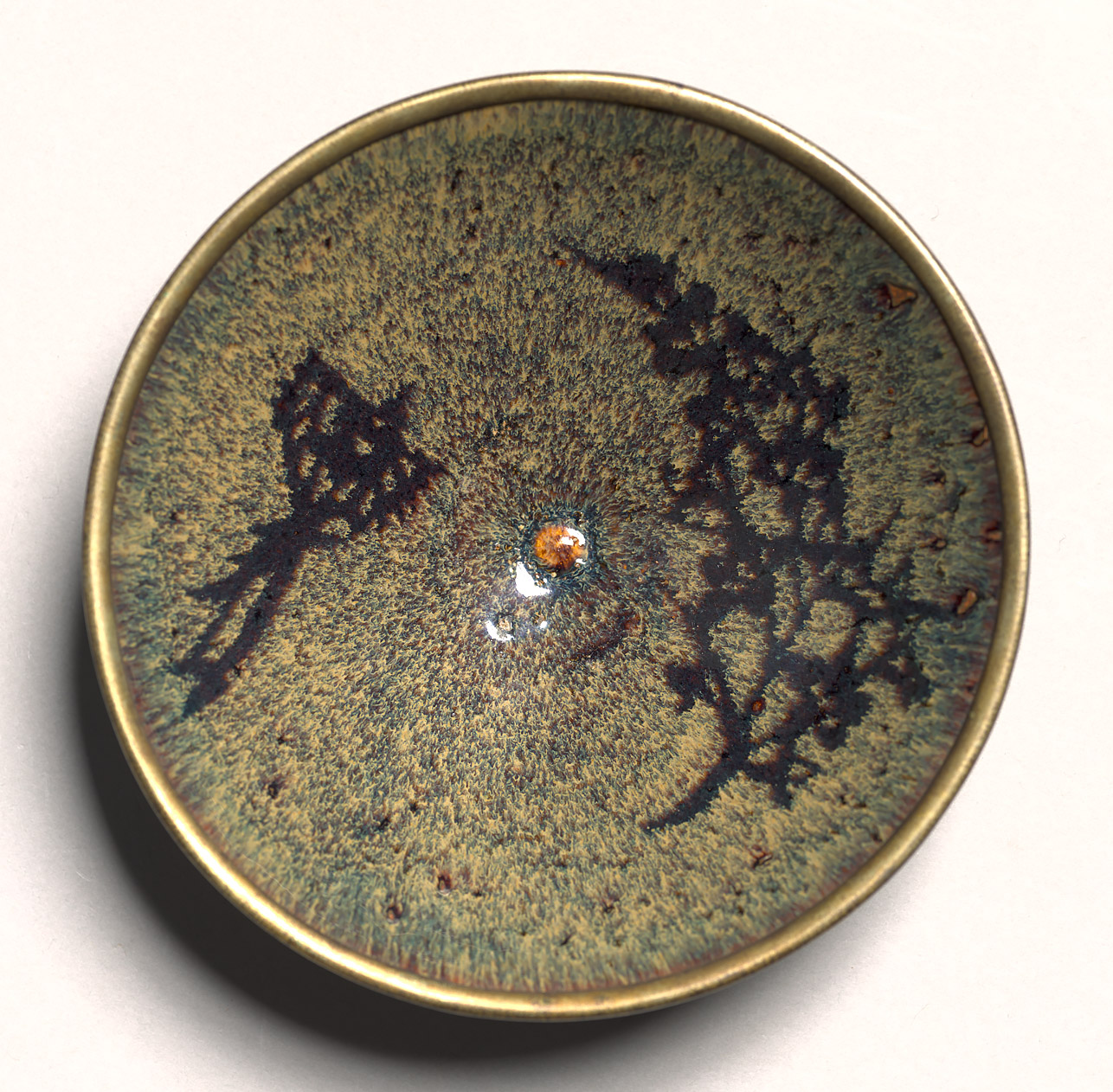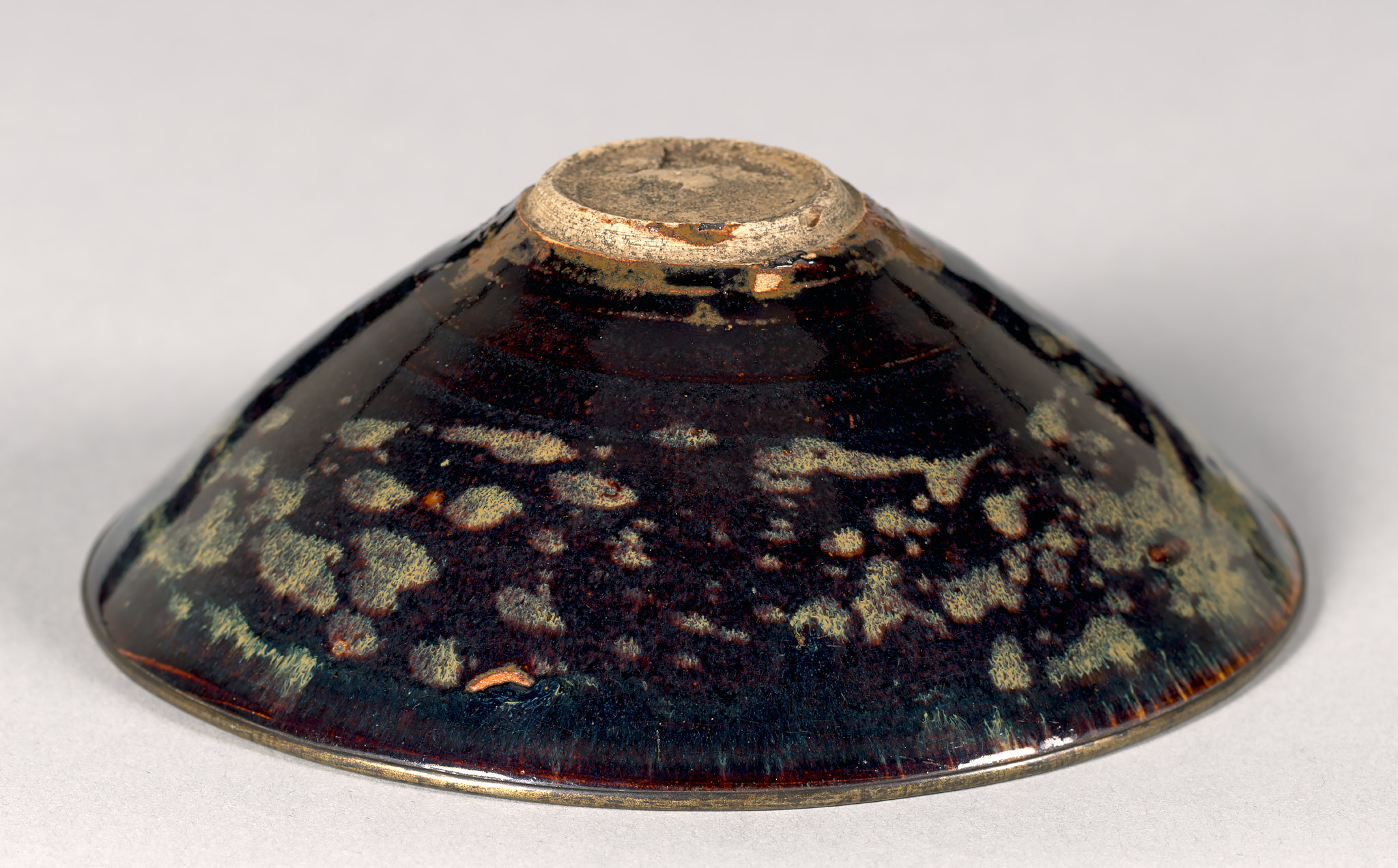- TOP
- The KNM Collection
- Masterpieces of the KNM
- Ceramics
- Tenmoku-Type Teabowl with Tortoiseshell Effect and Phoenix Design
*Click or tap image to enlarge.
Ceramics
Tenmoku-Type Teabowl with Tortoiseshell Effect and Phoenix Design
- China, Southern Song dynasty, 12th century
- Jizhou ware; glazed stoneware
- H. 5.1 cm, mouth diam. 15.3 cm, foot diam. 3.5 cm
- Kyoto National Museum (GK219)
This Chinese tenmoku-type bowl, fired at a kiln in Jizhou (Jiangxi province), is a standout example of its kind. It has long been cherished in Japan as one of the most prized possessions of the powerful Maeda lords of Kaga, whose domain encompassed the area around present-day Kanazawa. In Japan, it is characterized as a taihi tenmoku (“tortoiseshell tenmoku” bowl).
The bowl is crafted with subtly curved walls rising from a circular base into a flattened conical shape. Its exterior is adorned with distinctive tortoiseshell-like markings, while the interior features phoenix and plum branches created with cut-paper stencils to impart resist designs. The interior effect was created with two different glazes, first a black glaze, onto which paper stencils were laid, followed by an ash glaze, creating an intricate harmony of subtly blending blues, yellows, and reds. The metal rim may have been added in Japan.
This bowl is stored in a wooden box that is said to be inscribed by the esteemed tea master Kanamori Sowa (1584–1657), who advised the Maeda clan.










